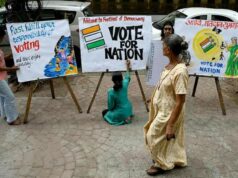The Iconic Admiral was one of his kind : Remembering Ronald Lynsdale Pereira
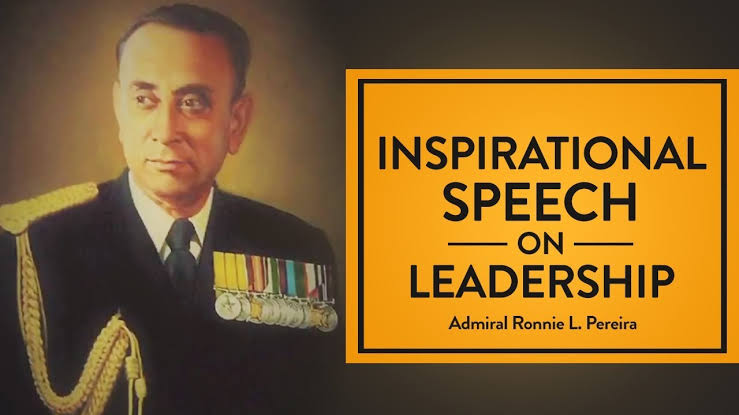
PART ONE
This iconic man cannot be described in words. We will not try also. We will just get all the stories which have become legends in one place.
Navy and the Country will remember him as the 9th Chief Of Naval Staff of India. More than 2000 NDA Cadets who entered Khadakvasla through the Pashan Gate between Jan 71 to Jan 73 will always remember him as their Deputy Commandant or Depcom.
Two Schools North Point and Mikes that is St Joseph Darjeeling and St Michaels Patna will always remain proud of him.
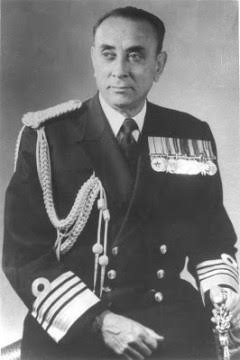
Early life
Ronald Pereira was born on 25 May 1923 to Lt John Michael Pereira and Charlotte Louise O’Keefe Lynsdale in Calcutta. He was the youngest of four children – two boys and two girls. His eldest brother Arthur was 14 years elder to him and his sisters Maisie and Inez were 12 and 6 years elder respectively.
John Michael studied medicine in Dublin, and joined the Indian Medical Department of the British Indian Arny. He was initially attached to the Seistan Force and served in Iraq. Returning to India in 1919, he was commissioned as a Lieutenant and subsequently attached to the 72 PUNJABIS.
In 1920, he moved to the civil department and served in BIHAR until his superannuation. He served as the Civil Surgeon (Chief Medical Officer of a district), Jail Superintendent of the Military Camp Jail, Patna and Gaya Central Jail, before taking over as the Superintendent of the Patna Medical College and Hospital.He was awarded the MBE in 1937 and KAISAR-I-HIND medal in 1938.
So Pereira initially attended the St Joseph’s School Darjeeling, popularly known as North Point, and then moved to the St Michaels High School Patna, a school established in 1858. His final Inter Science years were spent at the St Edmund’s College, Shillong.
He grew up initially thinking of joining the Army like his father and brother before him and filled out the temporary emergency commission form with the Army as his first choice and the Navy as his second choice.
He appeared before the provisional board in Bihar, followed by the central interview board at Lucknow where he requested a change to the Navy as his first choice.
He subsequently appeared before the Director of Reserves at Bombay for his final interview. Successful at the interview, he was commissioned in the Royal Indian Naval Volunteer Reserve (RINVR) as a Midshipman on 16 January 1943.
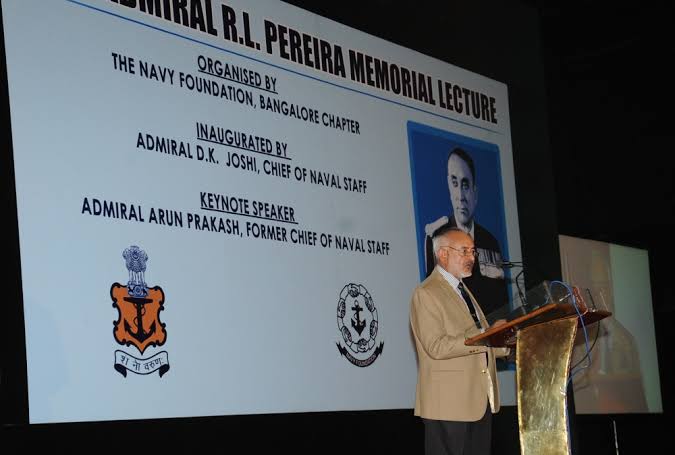
The Navy—-RIN
Pereira started his career with a six-month basic training course in Bombay and received the King’s commission as a Sub Lt on 25 May 1943, his 20th birthday.
He was posted to the Coastal Forces, Eastern Theatre (CCFET) at HMIS Cheetah in Trombay. The Navy had quickly fitted out vessels called Motor Launch (ML), having a small crew of about a dozen sailors, to ensure the coastal defence. The CCFET had about 50 MLs in four flotilla which were tasked to keep at bay the might of the Japanese Navy in the Bay if Bengal
Pereira was appointed executive officer of ML 1125 in mid 1943 and a few months later took command of the vessel. In early 1944, he took command of ML 1073 and, later in the year, of ML 844.
After the war, he was contemplating about his career and decided to pursue a career in dentistry. In early 1946, the 56th Services Selection Board was set up at Lonavala to screen the RINR and RINVR officers for a permanent commission in the RIN.
He was successful and was granted a permanent commission and soon promoted to the acting rank of Lt and pisted to HMIS SHAMSHER, a frigate stationed in the Persian Gulf.
After a short stint, he took command of ML 1261 at Basra. After around a year in command, he was selected to attend the RIN Gunnery course in UK in May 1947.
Indian Navy
Pereira returned to India in December 1948 and was appointed Staff Gunnery officer (West Coast), a staff appointment. He requested a sea appointment and in June 1949 was appointed Gunnery officer of the HMIS JUMNA, commanded by Commander S Soman.
He served on the Jumna for eighteen months. In January 1951, he was posted to the newly established Gunnery school in Cochin as an instructor. He was promoted to acting rank of Lt Commander on 30 June 1952.
Later that year, he was selected to attend the Defence Services Staff College, Wellington. After completing the staff course, he was appointed Staff Officer (Gunnery) at Naval headquarters on 25 August 1953.
Pereira led the naval marching contingent during the Republic Day Parade on 26 January 1954. In December 1954, he was appointed gunnery officer and flotilla gunnery officer of the INS CAUVERY and in March 1955, of the Navy’s first cruiser – the INS DELHI under the command of Captain A Samson In May 1956, he took over as Officer-in-Charge (OIC) of the Gunnery School, Cochin. Later that year, he was promoted to the acting rank of Commander.
Pereira was promoted to the substantive rank of Commander on 30 June 1958 and in October appointed executive officer of INS Delhi, stationed at Bombay. He was to have a short stint as XO of Delhi, since he was diagnosed with T B and was hospitalised in February 1959.
He recovered in about ten months and was appointed OIC of DEMOB centre at Bombay. In May 1961, he was appointed XO of the shore establishment INS Angre. This also included the responsibility of the naval barracks at Bombay.
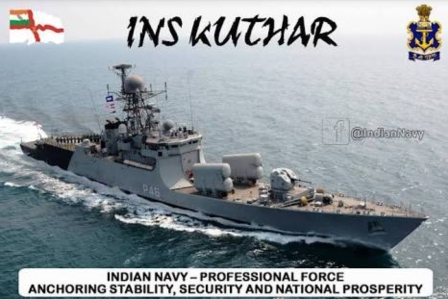
On 18 April 1962, Pereira was appointed Commander of the 14th frigate squadron and CO of INS KUTHAR an Anti Submarine frigate.
In June 1963, Pereira was posted to Bombay as the Drafting Commander, tasked with the planning of expanding manpower requirements for operational and administrative efficiency of the navy.
After an eighteen-month stint at Bombay, he was appointed Director of Weapon Policy & Tactics (DWPT) at Naval HQ in December 1964, with the acting rank of Captain. He served in this appointment during the 1965 war, although the Navy had little role to play in the war.
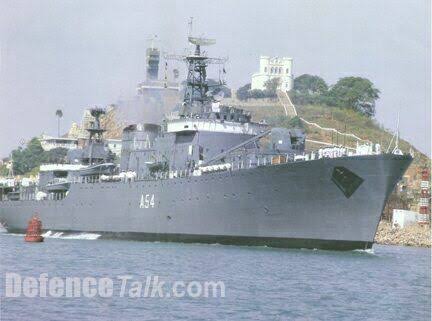
As Director DWPT, he was responsible for implementing the major work-up system in the navy. He was promoted substantive Captain on 30 June 1966.
Pereira was appointed Commanding Officer of the erstwhile INS Delhi in March 1967. Under him, the Delhi won the Naval Regatta championship in 1967.
Chatterji, by now CNS, praised Pereira as a born leader. After a year and a half as CO Delhi, he was appointed Naval officer-In-Charge (NOIC) Bombay, in December 1968. As NOIC, he was responsible for organising the Presidential Fleet Review (PFR) in 1969. 57 ships participated in the PFR led by the flagship VIKRANT. For planning and organising the PFR, Pereira was awarded the AVSM on 26 January 1971.
In January 1971, Pereira was promoted to the rank of COMMODORE and appointed Deputy Commandant (DepCom) of the National Defence Academy (NDA), Pune. The famous NDA ball was his brainchild, fashioned on the lies of the annual Naval Ball. A good golfer, he also ran the academy golf club. He had a memorable stint at DepCom at NDA for about two years.
Pereira was appointed the second Flag Officer Eastern Fkeet (FOCEF) in February 1973. He was promoted to the acting rank of Rear Admiral and took command of the Eastern Fleet from Rear Admiral H Sarma on 2 April 1973.
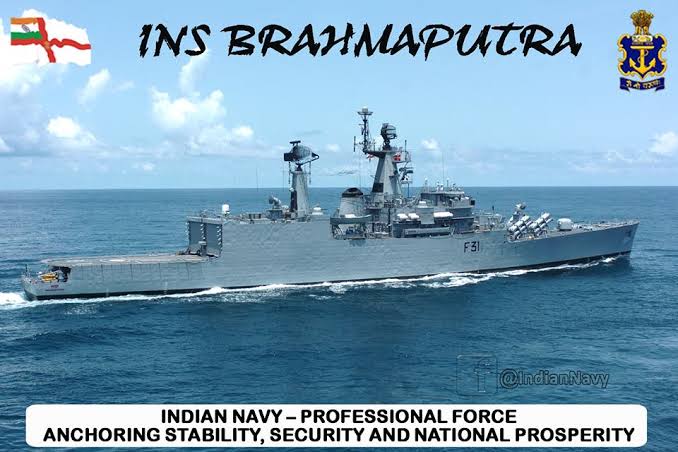
He flew his flag on INS AMBA until mid-1974 when the INS BRAHMPUTRA became the flagship of the Eastern fleet after which his flag transferred to the frigate.
In January 1975, Pereira was appointed Flag Officer Commanding Southern Naval Area Cochin. After a year as FOC South, he was promoted to the rank of VICE ADMIRAL on 1 March 1976 and appointed Flag Officer Commanding-in-Chief (FOC-in-C) Western Naval Command On 26 January 1977, while he was the FOC-in-C West, he was awarded the PVSM for distinguished service of the highest order.
After a year in command of the Western Naval Command, Pereira moved to Naval HQ as the VCNS in March 1977. In August 1978, he was appointed honorary ADC to the President of India.
Chief of Naval Staff
With Admiral Cursetji’s tenure coming to an end in early 1979, the FOC-in-C West Vice Admiral RKS Gandhi was tipped to be the next CNS. However, in November 1978, the Govt announced that Pereira was appointed the next CNS On 1 March 1979, he took over as the 9th Chief of the Naval Staff in the rank of Admiral. He is considered one of the architects of the modern Indian Navy.
Personal life
Pereira married Phyllis Beatrice Badal on 25 September 1952 at the Cathedral of the Holy Name, Mumbai. The couple did not have any children. As proud parents, the couple came to love every young cadet they met at the NDA, especially so for the mavericks who were sent to him for displeasure. Ronnie addressed them as ‘Son’, a tradition that came to be in all services.
Later life and
After superannuating from the Navy, the Pereiras moved to Bangalore. While he was the VCNS, he had purchased land and constructed a house in the outskirts of the city. The modest house was called ‘At last’ and was at Whitefield, Bangalore.. In 1988, the couple decided to move to Wellington in the Nilgiris by selling off their Bangalore home and shifted into their new home called ‘Broadsides’.
In the early 1990s, Pereira, a life-long smoker, was diagnosed with lung cancer. He underwent treatment at the INHS ASHWINI in Bombay before moving back home. In 1993, the cancer relapsed and his condition deteriorated. Initially hospitalised at the Military Hospital in Wellington, he was moved to the Command Hospital in Bangalore. On 14 October 1993, he succumbed to the disease at the age of 70.
On 16 October, Pereira was laid to rest at the Roman Catholic cemetery in Bangalore with full military honours. Wreaths were placed on behalf of the President, VP and the PM and the Raksha Mantri, apart from the three service chiefs. The Prime Minister and Defence Minister also issued condolence messages.
Former naval chiefs Admiral O S Dawson, a school type from St Michaels Patna and Admiral L Ram Das paid their last respects, as did the FOC-in-C Southern naval Command, the DG Coast Guard, the AOC-in-C Training Command, the GOC Karnataka and Goa Sub Area and senior police and civil officers.
Apart from the multitude of Admirals, Generals and Air Marshals, junior service officers in uniform crowding his funeral service, there was also a large gathering of sailors and civilian officials who came to pay their obeisance.

